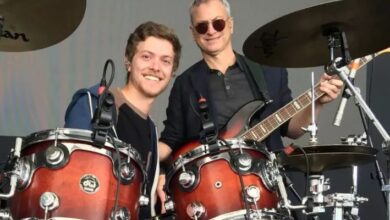On Good Friday, Vatican preacher says authentic intelligence is found in self-giving love

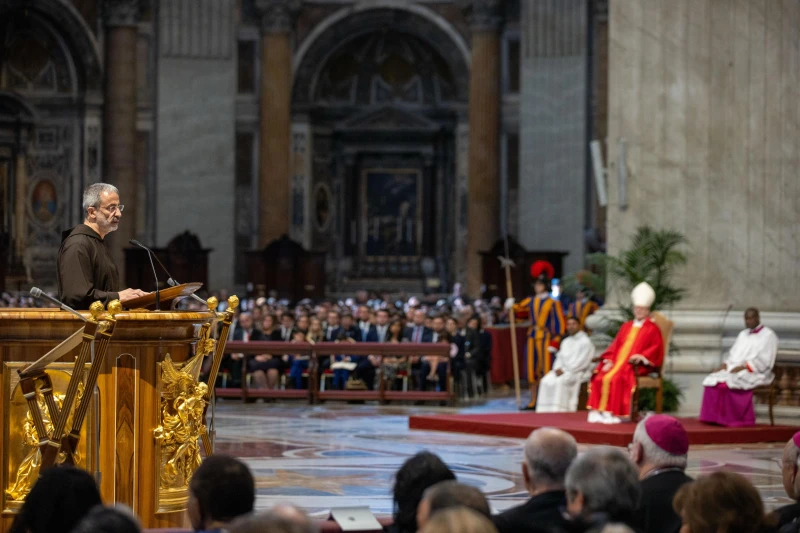 Father Roberto Pasolini, OFM Cap, gives the homily during a two-hour Liturgy of the Lord’s Passion in St. Peter’s Basilica on Good Friday, April 18, 2025. / Credit: Daniel Ibañez/CNA
Father Roberto Pasolini, OFM Cap, gives the homily during a two-hour Liturgy of the Lord’s Passion in St. Peter’s Basilica on Good Friday, April 18, 2025. / Credit: Daniel Ibañez/CNA Vatican City, Apr 18, 2025 / 13:29 pm (CNA).
Rather than an “artificial” intelligence, Christ’s death teaches us the authentic “intelligence of the cross,” which is the freedom to choose self-giving love in relationship with God and others, the papal preacher said at the Vatican on Good Friday.
Preaching during a two-hour Liturgy of the Lord’s Passion in St. Peter’s Basilica, Father Roberto Pasolini, OFM Cap, underlined how, “in a time like ours, so rich in new intelligences — artificial, computational, predictive — the mystery of Christ’s passion and death proposes to us another kind of intelligence: the intelligence of the cross, which does not calculate, but loves; which does not optimize, but gives itself.”
The intelligence of the cross, he continued, is not artificial “but deeply relational, because it is entirely open to God and to others. In a world where it seems to be algorithms that suggest to us what to desire, what to think, and even who to be, the cross restores to us the freedom of authentic choice, based not on efficiency but on self-giving love.”
According to custom, the preacher of the papal household writes and delivers the homily at the Vatican’s Good Friday liturgy. This year, Cardinal Claudio Gugerotti, prefect of the Dicastery for Eastern Churches, celebrated the liturgy in Pope Francis’ place as the 88-year-old pontiff continues his slow recovery from double pneumonia and other respiratory infections.
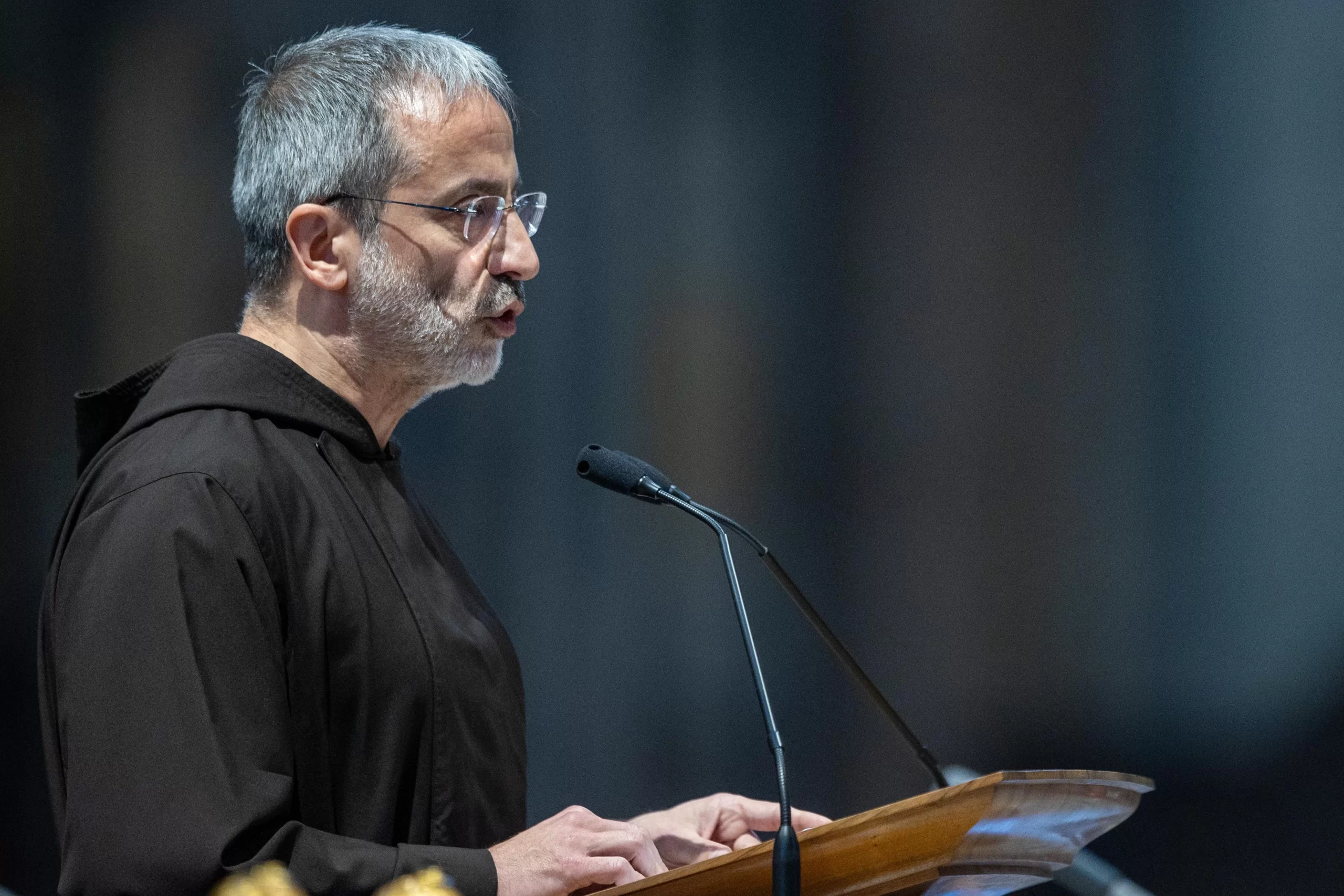
Pasolini, in his homily, emphasized the importance of self-gift over self-reliance and on surrender of one’s life and suffering to God.
“The expression ‘full surrender,’ with which the Letter to the Hebrews describes Christ’s conduct, could also be translated as the ability to accept with confidence what happens, to take well even what initially appears hostile or incomprehensible,” he said. “In his passion, in fact, Christ did not simply suffer events but welcomed them with such freedom that he transformed them into a path of salvation. A path that remains open to anyone who is willing to trust the Father to the fullest, allowing himself to be guided by his will even in the darkest passages.”
“Jesus reveals to us that it is not strength that saves the world but the weakness of a love that holds nothing back,” the preacher added. “The time in which we live, marked by the myth of performance and seduced by the idol of individualism, struggles to recognize moments of defeat or passivity as possible places of fulfillment.”
In fact, when suffering hits us, he continued, we tend to feel inadequate and out of place. We try to endure, gritting our teeth, but “the last words of the crucified Jesus offer us another interpretation: They show us how much life can flow from those moments when, with nothing left to do, there actually remains the most beautiful thing to accomplish: to finally give of ourselves.”
The Liturgy of the Lord’s Passion on April 18 opened in silence, as Gugerotti processed to the altar to lie prostrate before the crucifix for one minute. The service proceeded with readings from Scripture, including the sung proclamation of the Passion account from the Gospel of St. John.
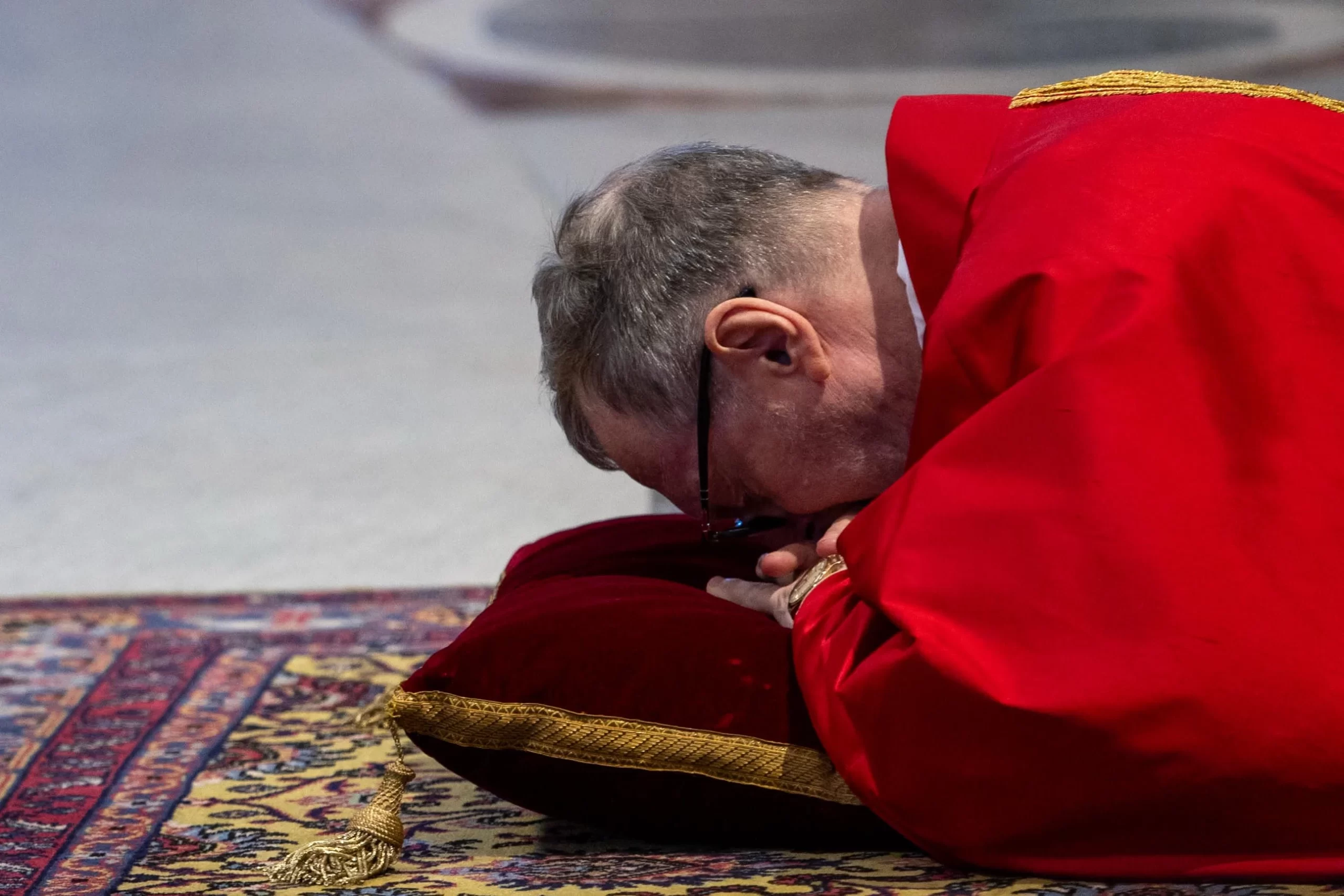
During veneration of the holy cross, first, a crucifix was carried down the main aisle of the Vatican basilica while the choir chanted three times in Latin, “Ecce lignum Crucis, in quo sales Mundi pependit,” which means, “This is the wood of the cross, on which hung the Savior of the world.” Together, the choir and congregation responded in Latin: “Come, let us worship.”
Afterward, some people in attendance at the liturgy approached the cross to make a sign of veneration, which was followed by the reproaches and a hymn.
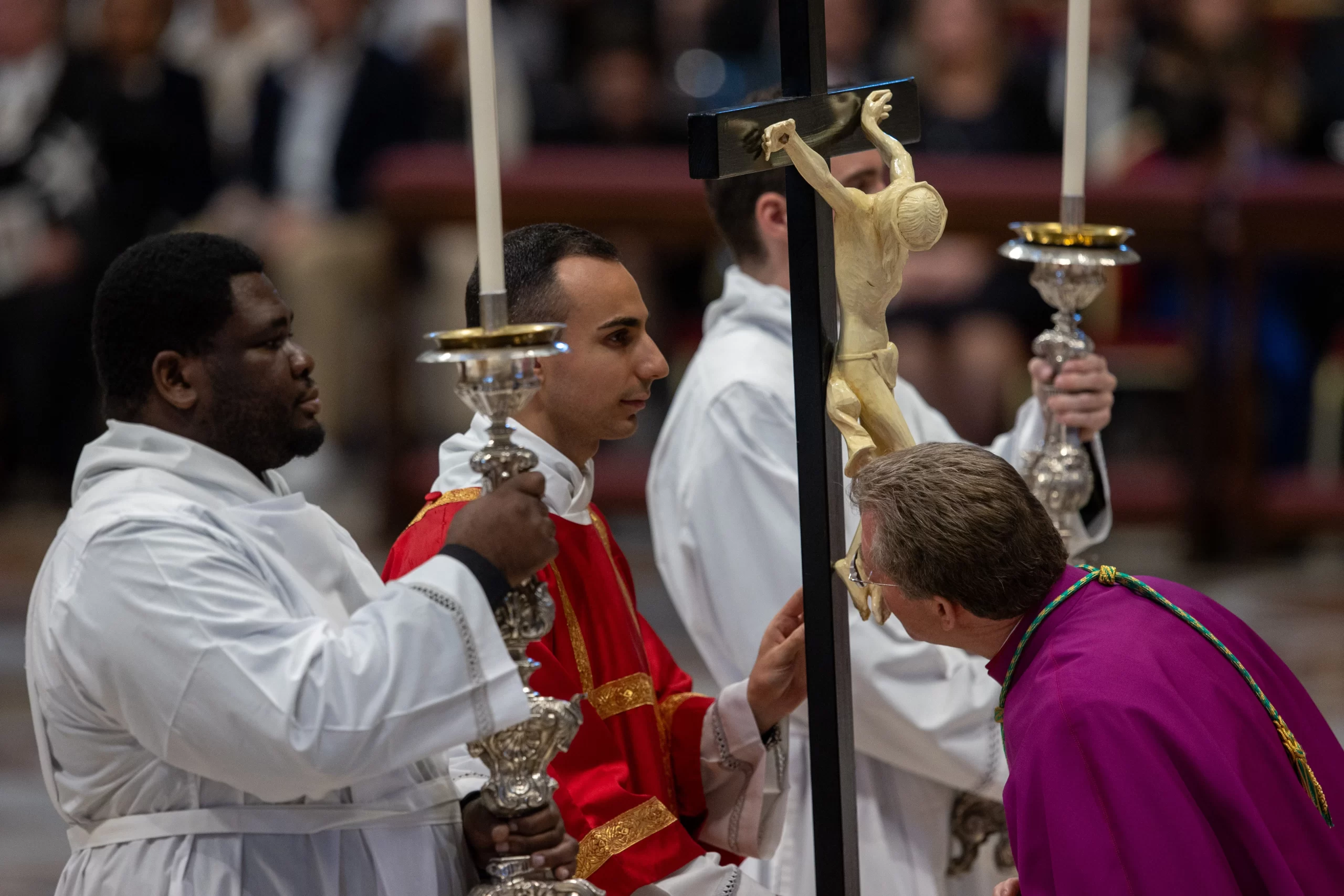
The third, and final, part of the two-hour service was the reception of holy Communion.
In his homily, delivered after the Gospel, Pasolini also drew attention to three phrases Christ uttered during his Passion — “I am,” “I thirst,” and “it is finished” — and what they can teach us about abandonment to God.
Pointing out the freedom with which Jesus offered himself at the moment of his arrest, identifying himself to the soldiers, the preacher said this confident surrender to God can be an example for us “at times when our lives suffer some setbacks — a painful setback, a serious illness, a crisis in relationships.”
“How is it possible to do this? By taking a step forward. By presenting ourselves first to the encounter with reality,” he said. “This attitude hardly ever changes the course of events — in fact, Jesus is arrested soon after — but if lived with faith in God and trust in the history he leads, it enables us to remain inwardly free and steadfast. Only then does the burden of life become lighter, and suffering, while remaining real, stops being useless and begins to generate life.”
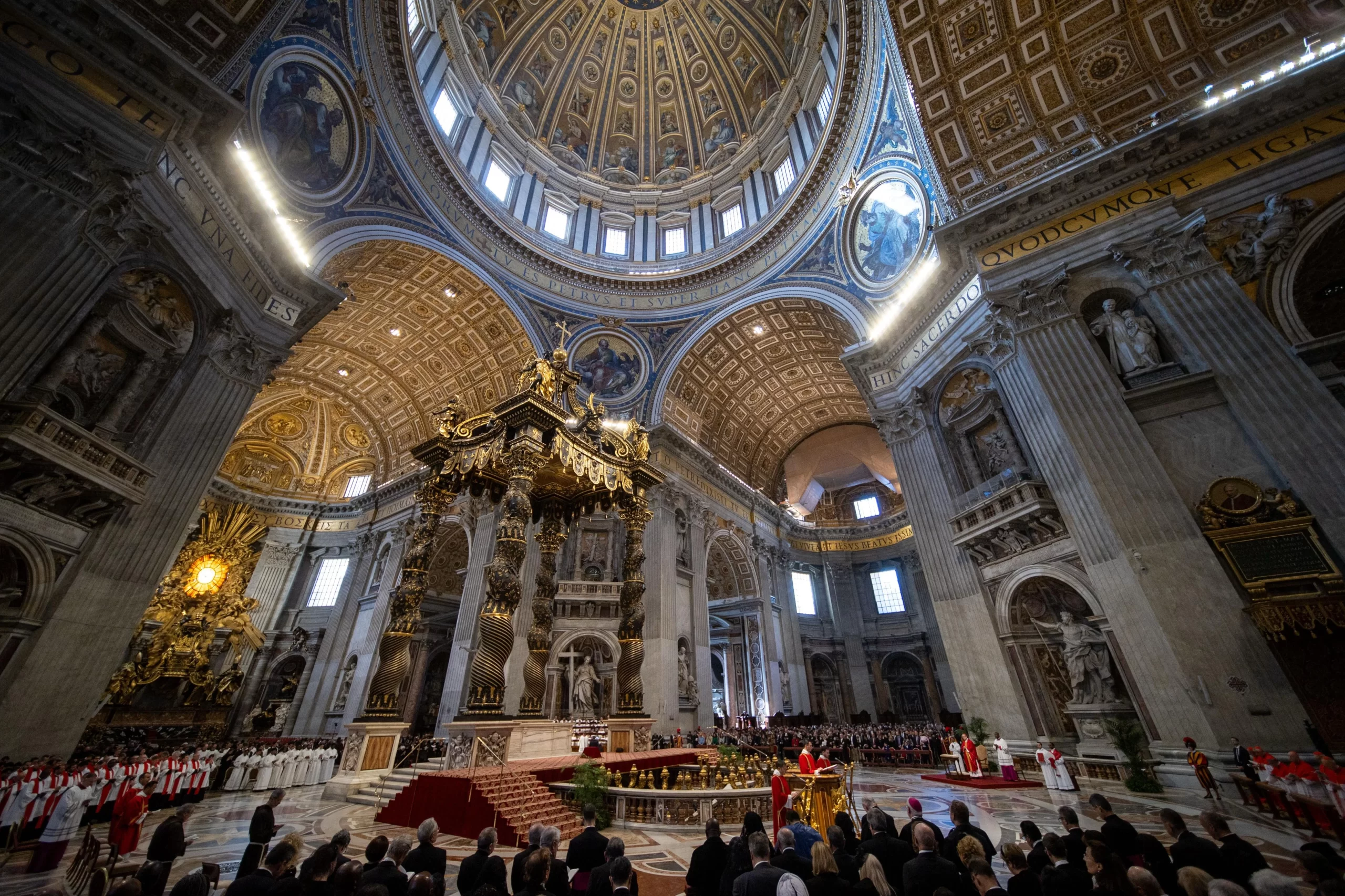
When Jesus cried out from the cross, “I thirst,” he demonstrated his human need, Pasolini said, noting that “when pain, weariness, loneliness, or fear lay us bare, we are tempted to close ourselves off, to stiffen up, to feign self-sufficiency. … Asking for what we need, and allowing others to offer it to us, is perhaps one of the highest and most humble forms of love.”
Full trust and abandonment to God, as Christ exemplified in his final words, “it is finished,” are also part of the theme of the jubilee year, Pasolini said.
Pope Francis wanted to remind us, he recalled, “that Christ is the anchor of our hope, to whom we can remain firmly united, tightening the rope of faith that binds us to him beginning from our baptism.”
But this is not easy, the preacher emphasized, especially when we experience evil, suffering, or loneliness. Which is why it is important “to accept the invitation of the Letter to the Hebrews: to approach the cross with full confidence, recognizing in it the ‘throne of grace in order to receive mercy and find grace, so as to be helped at the appropriate time.’”


